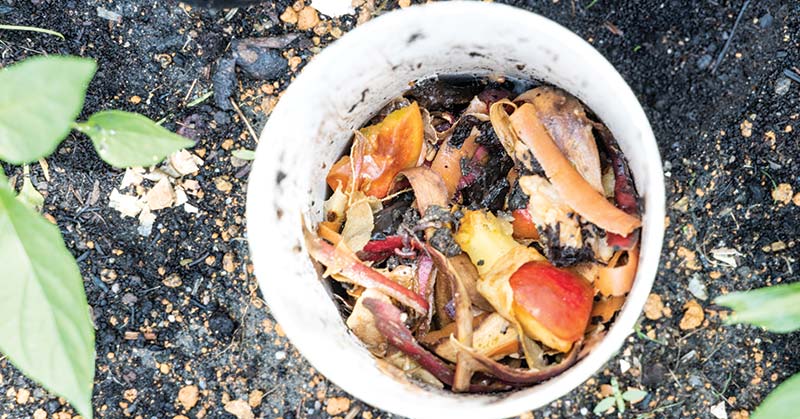Composting juice pulp is an eco-friendly and effective way to reduce kitchen waste while enriching your garden soil. The process is simple: first, collect the pulp from your juicer. This pulp is typically rich in nutrients and fiber, making it a valuable addition to your compost bin. To ensure a balanced compost, mix the juice pulp with equal parts of ‘brown’ materials like dried leaves, cardboard, or straw. This creates the perfect environment for decomposition, turning your juice remnants into a nutrient-rich soil amendment.
Now, let’s delve deeper into the art of composting juice pulp and discover how this simple act can contribute to a healthier garden and a greener planet.
The Benefits of Composting Juice Pulp
Before we explore the steps in detail, it’s important to understand why composting juice pulp is beneficial. Juice pulp is a byproduct of juicing fruits and vegetables. While it’s often discarded, this organic material is a goldmine of nutrients. Composting it not only reduces landfill waste but also recycles these nutrients back into your garden. The compost produced is a natural fertilizer, rich in nitrogen, potassium, and other essential minerals that promote healthy plant growth.
Step-by-Step Guide to Composting Juice Pulp
Step 1: Prepare Your Compost Bin
If you’re new to composting, start by choosing a suitable compost bin. There are various types available, from simple open bins to sophisticated tumblers. Place it in a convenient but discreet location in your yard. Ensure it has good aeration, as oxygen is crucial for the composting process.
Step 2: Balance Your Greens and Browns
In composting terminology, juice pulp is considered a ‘green’ material because it’s rich in nitrogen. To compost effectively, balance it with ‘brown’ materials, which are high in carbon. Examples of brown materials include dry leaves, sawdust, or shredded newspaper. A good rule of thumb is to use equal parts of green and brown materials.
Step 3: Layering and Mixing
Start by adding a layer of brown materials at the bottom of your compost bin. Then, add a layer of juice pulp. Alternate between layers of greens and browns, finishing with a brown layer on top. This not only helps in balancing the compost but also minimizes odors and accelerates decomposition.
Step 4: Regular Maintenance
Turn your compost pile every few weeks to aerate it, which speeds up the composting process. Keep the compost moist, but not wet. If it’s too dry, the decomposition will slow down; if it’s too wet, it can become smelly and attract pests.
Tips for Successful Composting of Juice Pulp
- Avoid composting pulp from citrus fruits in large quantities, as the high acidity can slow down the composting process.
- If you juice a lot, consider freezing your pulp in batches before adding it to your compost to avoid overloading your bin with greens.
- Remember to cut any large pieces of fruit or vegetable pulp into smaller pieces to speed up decomposition.
The Environmental Impact
By composting juice pulp, you’re not just creating valuable fertilizer for your garden; you’re also playing a significant role in reducing kitchen waste. This act contributes to a sustainable lifestyle, reducing your carbon footprint and helping to mitigate the environmental impact of food waste.
Conclusion
Composting juice pulp is an easy, beneficial practice that turns waste into treasure. It enriches your garden, reduces landfill waste, and contributes to a healthier environment. So, next time you make juice, remember that the leftover pulp holds the key to a greener garden and a greener planet.
FAQs on How to Compost Juice Pulp
Q: Can all types of juice pulp be composted?
A: Yes, most juice pulp can be composted. However, be cautious with large quantities of citrus pulp as its high acidity can slow down the composting process.
Q: Do I need a special compost bin for juice pulp?
A: No, you don’t need a special compost bin. Any standard compost bin will work, but ensure it has good aeration.
Q: How do I balance juice pulp with other compost materials?
A: Balance juice pulp (a ‘green’ material) with equal parts of ‘brown’ materials like dry leaves, straw, or shredded newspaper to maintain a healthy compost.
Q: Can I compost juice pulp if I live in an apartment?
A: Yes, you can compost juice pulp in an apartment using a small indoor compost bin or a worm composting (vermicomposting) system.
Q: How often should I turn my compost when adding juice pulp?
A: It’s ideal to turn your compost every few weeks. Regular turning is important to aerate the pile and speed up the composting process.
Q: What should I do if my compost starts to smell bad?
A: Bad odor is often a sign of too much moisture or an imbalance between green and brown materials. Add more browns, turn the pile for aeration, and ensure it’s not overly wet.
Q: Is it okay to add pulp from fruits treated with pesticides to my compost?
A: It’s generally best to avoid composting pulp from fruits treated with heavy pesticides as they can leach into your compost and soil.
Q: How long does it take for juice pulp to decompose in a compost bin?
A: The decomposition time varies, but typically juice pulp will break down within a few months when balanced and maintained properly in a compost pile.
Q: Can adding juice pulp to my compost attract pests?
A: If composted correctly and covered with brown materials, juice pulp should not attract more pests than usual. However, ensure your compost bin is well-secured to avoid attracting animals.
Q: Will composting juice pulp benefit my garden?
A: Absolutely! Composting juice pulp enriches the soil with nutrients, promoting healthier plant growth and contributing to a more sustainable garden ecosystem.




